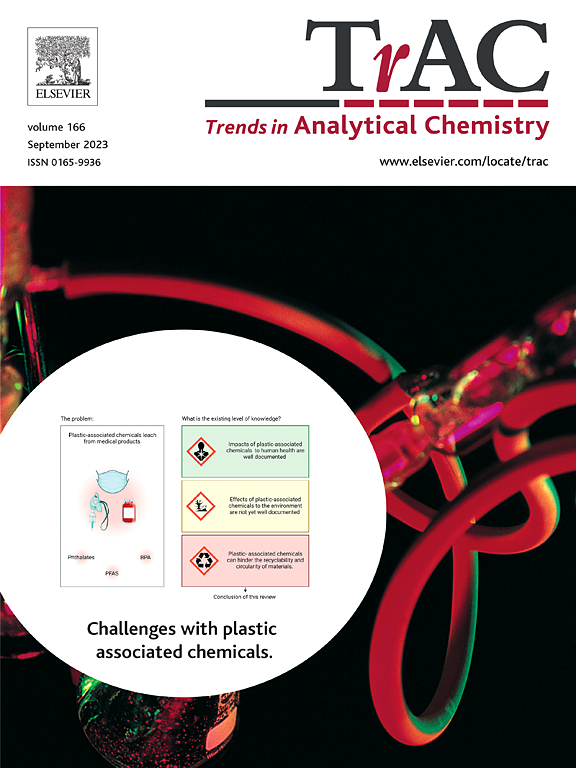Molecular recognition on glycans interaction in cell membrane by atomic force microscopy
IF 11.8
1区 化学
Q1 CHEMISTRY, ANALYTICAL
引用次数: 0
Abstract
Glycans, also known as polysaccharides/saccharides/carbohydrates, commonly found in biological cell membrane/wall, and play important biological functions. Biomolecular recognition on the cell surface is governed by molecular interactions, making direct measurement essential for understanding biological processes. Atomic force microscopy (AFM) is the only microscopy technique that provides images in aqueous media with nanometer resolution, which greatly facilitates the specific recognition of macromolecules on the cell surface. Moreover, single-molecule force spectroscopy (SMFS) based on AFM has been commonly employed to investigate interactions between proteins and other molecules. However, there are fewer reviews on glycan molecular recognition. Therefore, this review focuses on the molecular recognition between glycans and cell membranes using AFM, covering glycans-receptor interactions and the important roles of glycans on the cell membrane. Finally, strategies for enhancing the study of molecular recognition between glycans and cell membranes through AFM are prospected and with the aims to address biomedical challenges and discover novel biomolecules.
细胞膜聚糖相互作用的原子力显微镜分子识别
聚糖,又称多糖/糖类/碳水化合物,普遍存在于生物细胞膜/细胞壁中,具有重要的生物学功能。细胞表面的生物分子识别是由分子相互作用控制的,这使得直接测量对理解生物过程至关重要。原子力显微镜(Atomic force microscopy, AFM)是目前唯一能够在水介质中提供纳米分辨率图像的显微镜技术,它极大地促进了对细胞表面大分子的特异性识别。此外,基于AFM的单分子力谱(SMFS)已被广泛用于研究蛋白质与其他分子之间的相互作用。然而,对多糖分子识别的研究较少。因此,本文就利用原子力显微镜研究聚糖与细胞膜之间的分子识别进行综述,包括聚糖与受体的相互作用以及聚糖在细胞膜上的重要作用。最后,展望了通过原子力显微镜加强聚糖与细胞膜之间分子识别研究的策略,旨在解决生物医学挑战和发现新的生物分子。
本文章由计算机程序翻译,如有差异,请以英文原文为准。
求助全文
约1分钟内获得全文
求助全文
来源期刊

Trends in Analytical Chemistry
化学-分析化学
CiteScore
20.00
自引率
4.60%
发文量
257
审稿时长
3.4 months
期刊介绍:
TrAC publishes succinct and critical overviews of recent advancements in analytical chemistry, designed to assist analytical chemists and other users of analytical techniques. These reviews offer excellent, up-to-date, and timely coverage of various topics within analytical chemistry. Encompassing areas such as analytical instrumentation, biomedical analysis, biomolecular analysis, biosensors, chemical analysis, chemometrics, clinical chemistry, drug discovery, environmental analysis and monitoring, food analysis, forensic science, laboratory automation, materials science, metabolomics, pesticide-residue analysis, pharmaceutical analysis, proteomics, surface science, and water analysis and monitoring, these critical reviews provide comprehensive insights for practitioners in the field.
 求助内容:
求助内容: 应助结果提醒方式:
应助结果提醒方式:


